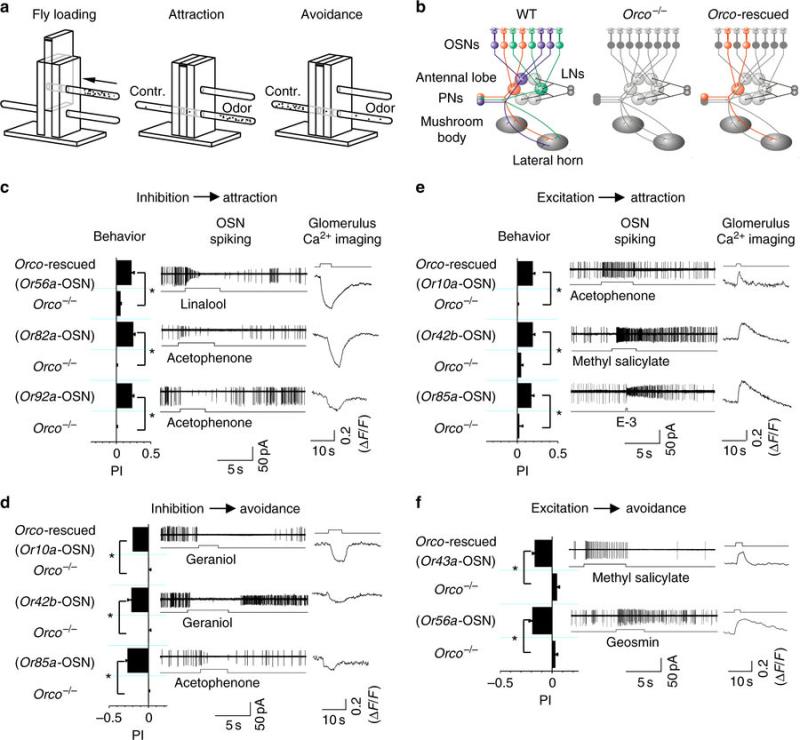Inhibitory response occurs throughout the nervous system, including the peripheral olfactory system. While odor-evoked excitation in peripheral olfactory sensory neurons is known to encode odor information, the molecular mechanism and functional roles of odor-evoked inhibition remain unknown. Combining patch-clamp electrophysiology, optogenetics, behavioral assay, and neural computation, Dong-Gen Luo’s group examined Drosophila olfactory system, revealing that odor-evoked inhibition of olfactory sensory neurons originated as a reduction of odorant receptor protein’s spontaneous activity by odors and discovering that such an inhibition by itself could drive olfactory attraction and avoidance behaviors, as did odor-evoked excitation. Thus, peripheral inhibition is comparable to excitation in encoding sensory signals. Furthermore, the authors demonstrated that such a bidirectional code with both odor-evoked inhibition and excitation in single olfactory sensory neurons increases the odor-coding capacity, providing a means of efficient sensory encoding.

Odor-evoked OSN inhibition and olfactory behaviors
Dong-Gen Luo’s laboratory is affiliated with the Key Laboratory of Membrane, McGovern Institute for Brain Research, Center for Quantitative Biology, Center for Life Sciences, and College of Life Sciences.